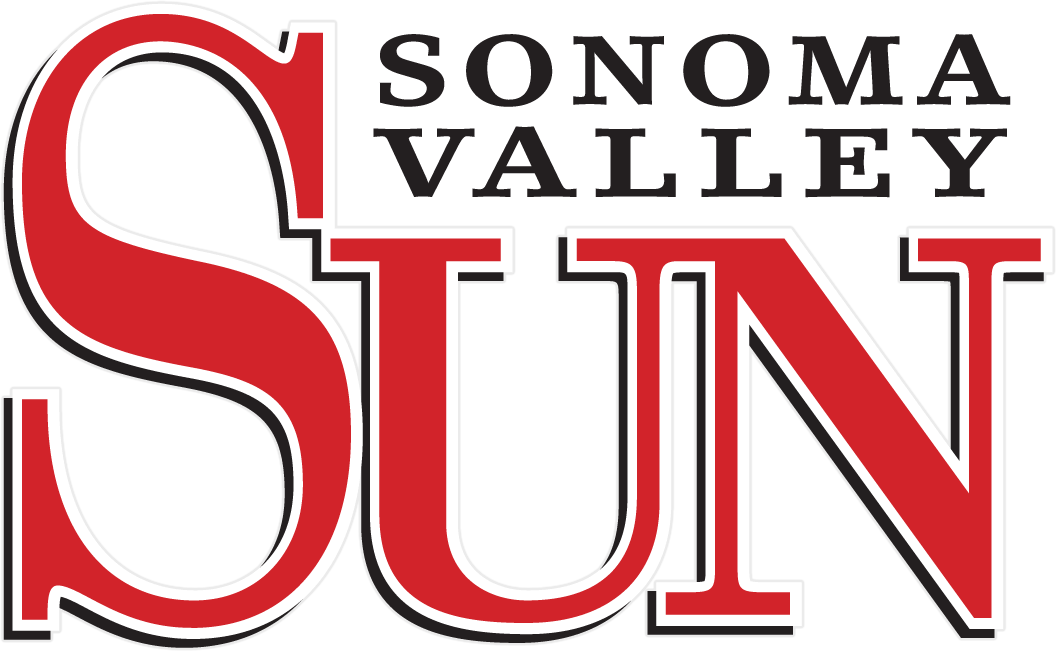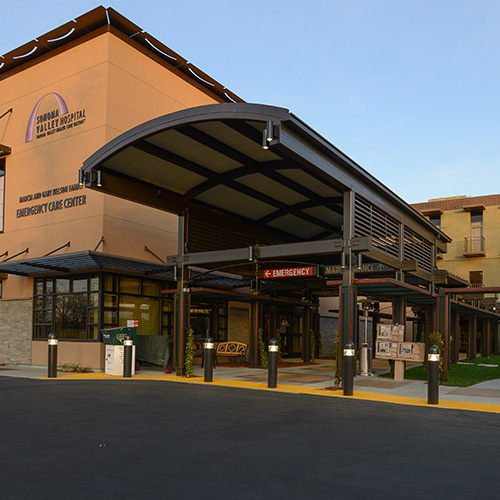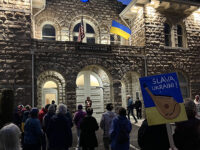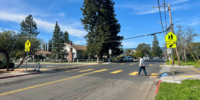The Sonoma Valley Hospital Board of Directors and staff called a meeting to ask for public opinion on possible land uses for a nearby parcel the hospital recently purchased.
The land in question, referred to as The South Lot, has been the focus of hospital attention since 2011 when the hospital entered into a lease-to-buy agreement with Tri-Counties Bank. The lot is bordered by 4th Street West, MacArthur and Hayes Street and is zoned residential, eight units per acre. The lot size is four acres, although one hospital document said it was 4.9 acres. Buildable acreage would be under three acres.
After the lease, the hospital appointed a South Lot Committee to consider future use of the property. Past land use discussions contemplated residential, medical offices, and a health club.
The lot was used for construction staging during the recent hospital remodeling and the option to buy was exercised by the hospital in August of 2016. The hospital paid $1,743,054 for the property. Approximately one acre of the parcel is currently, and will stay in use as a parking lot.
The hospital would like to move quickly on land use decisions for The South Lot and graciously offered the public an opportunity for comment, at a noticed meeting 10/17/16 at 6:PM at the hospital. This meeting was filmed by KSVY and can be viewed on the KSVY archive.
One resident mentioned that she was new to the public process in this area of town. After hearing various members of the public speak, she felt like the land’s use was already a done deal; perhaps reacting to how the usual suspects come out swinging with all their plans and ideas of how town should be. In fact, the hospital has not made any decisions as of yet. Kelly Mather, hospital CEO, said the hospital had just closed on the land in August and was now doing its due diligence to engage the public and work up some options.
At the public meeting, three factions spoke up representing three general sets of interests. These interests are: affordable housing (AH), market rate housing (MRH), and South Lot committee members speaking on behalf of future hospital financial options. In Sonoma, the AH/ MRH divide is a salient one, where different sets of values come into conflict over land use decisions. What is “affordable” from an MRH standpoint, is not affordable from an AH standpoint. At stake in this conflict is the demographic balance of town, how we frame our role and place as citizens in society, and whether the market, or citizen involved government, should primarily determine the flavor and face of the city.
Historically, all development projects, of any kind, get push back by neighbors and the public; land uses are facts on the ground that make a public display of who we are as a community. Land uses mark the territorial boundaries of neighbors and neighborhoods. Every interest sees themselves as represented or not in land use decisions, and since such decisions typically last for quite a long time, the stakes are high.
Whitney Young, Steve Barbose, Fred Allebach and a number of others strongly supported the use of the property to build actual affordable housing, that is, on a spectrum around the county Area Median Income (AMI). The median means half the population. Citizens making AMI incomes cannot afford MRH. Whitney Young and Steve Barbose have formed a committee to look into AH options for the South Lot. Barbose, a former city Planning commissioner, city council member and mayor said he would like to help “solve the (affordable housing) problem.”, and not have “just another market rate development.”
Fred Allebach noted that non-profit housing developers are the only ones who can build actual AH, and in order for this to happen on the South Lot, the property would have to be rezoned, and the General Plan amended, to allow higher density. AH is built though gaining economies of scale. If the land price was to get run up by high bidding, non-profit developers would need help to meet the purchase price.
One neighbor spoke in support of senior housing; we “really need senior housing that is affordable, and get them out of the trailer parks.”
A number of developers were present who signaled their intent to bid in the property. Matthew Tippell, former Planning Commissioner and local developer said he would like to offer a preference for hospital employees. Tippell said he had been looking at this land for years, has been in contact with the hospital, and has specific ideas of what he’d like to do.
Developer Lee Cambra said he also intends to bid on the property. Cambra has built a lot of projects in the region. His take on affordable rents is a range of $1,600 – $2000 a month. Cambra focused on the availability and price of land, and how a constrained city boundary makes base land prices too high to build AH. The only place to get affordable land, and therefore to build AH, from Cambra’s MRH perspective, is on county land, on farm land adjacent to the city, he said. For MRH developers to build AH, the Urban Growth Boundary (UGB) would need to be expanded, to open such land and for development.
Another developer present said that county building fees run upwards of $100,000 for a 2,500 square foot home, and that these fees will not be reduced by the county. The developer noted that AH only works when subsidized, by government he said (or by banks looking to get tax credit write-offs).
A number of members of the public suggested a combination of AH and MRH on the South Lot. Indeed, any project of over five units would be subject to the city’s inclusionary housing provision, to include 20% AH.
Norman Gilroy, a member of the South Lot Committee, counseled the hospital to not rush to sell and develop. Gilroy urged the hospital to preserve a portion of the land for future construction staging needs. His point was for the hospital to not lose control of the land and thus resources that could fund future needed upgrades.
Peter Haywood seconded Gilroy and said that in 2008 The South Lot was worth $5 million. Haywood said the hospital should see the land as a future capital asset, and not as a source of short-term cash. Haywood urged the hospital to seek an RFP, (request for proposal) and noted that in the economics of residential housing, “AH looks pretty extreme unless someone comes in with a lot of money.”
Marilyn Goode cut some middle ground and urged the hospital Board to listen to Norman and Peter, and also to look for partners to build AH for hospital employees. Goode said also suggested a small medical building (which would require rezoning just like an AH use would). In support of AH, Goode said, “we are losing our town fast, the more fancier this and that, the less our own children can live here.”
One member of the public suggested the land be left vacant so he could watch the fireworks.
In the end, it appears that if the hospital were to pursue its own greatest financial interest, this would obviate the pursuance of strong community interests in AH and preserving a diverse city demographic. If the Gilroy/Haywood perspective prevails, there may not be a sale of all the land. And MRH would be a likely outcome. As a service organization focused on meeting community needs, the hospital clearly indicated that has its own legitimate financial needs to think of. Will the hospital make itself more vulnerable, in support of other vulnerable citizens, or go for the highest bidder? Thus, The future of The South Lot finds itself in a situation that reflects the prevalent Sonoma land use issues of the day.






Be First to Comment